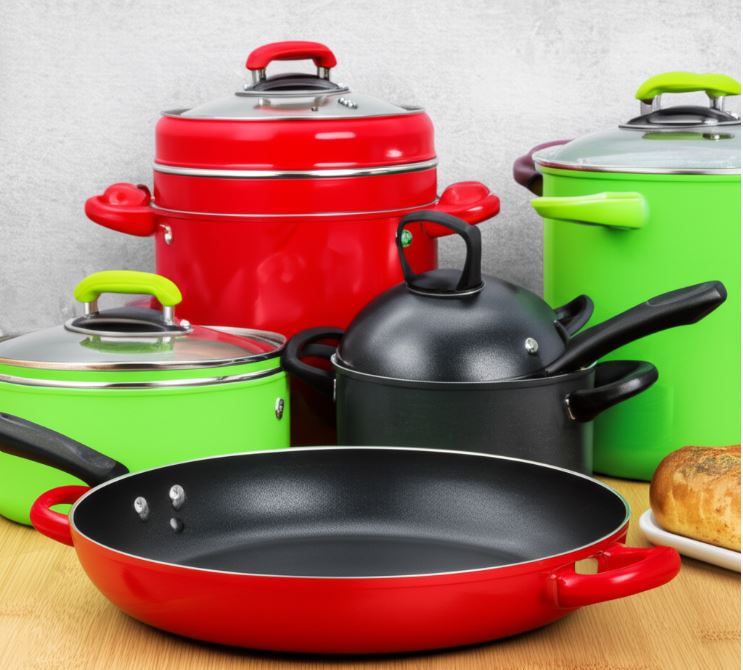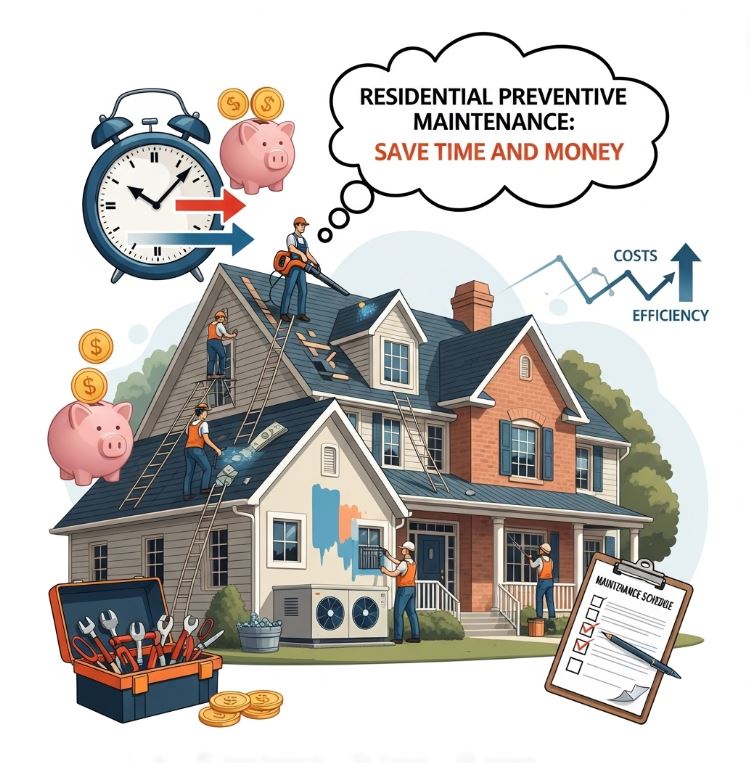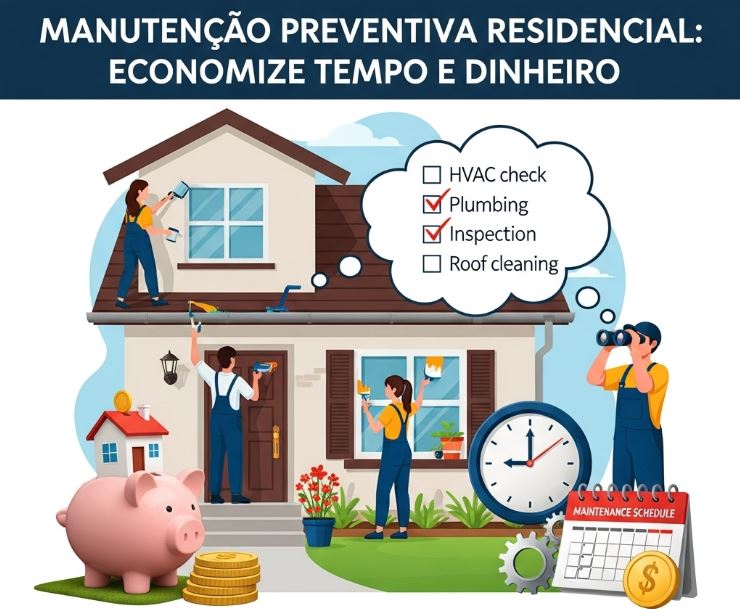
Home Preventative Maintenance: Save Time and Money

Home Preventative Maintenance: Save Time and Money
Home Preventative Maintenance: Save Time and Money Discover the importance of preventative home maintenance in safeguarding your property and saving money on future repairs. Learn about common household problems, essential maintenance tasks, and the long-term financial benefits of a proactive approach. Understand when to tackle DIY projects and when to call professionals, ensuring your home remains in optimal condition year-round. Create a maintenance schedule and access valuable resources to enhance your home upkeep efforts.
Introduction to Preventative Home Maintenance
Preventative home maintenance refers to the regular upkeep and proactive measures taken to ensure a house remains in good condition. This practice is essential for homeowners, as it focuses on addressing potential problems before they escalate into significant, costly issues. By investing time and resources into maintenance activities, homeowners can effectively safeguard their property against common repairs that often lead to disruptions and financial burdens.
Statistics highlight the importance of preventative measures in home maintenance. For instance, the American Society of Home Inspectors notes that about 40% of homeowners experience issues related to water intrusion, which can lead to extensive damage if not addressed promptly. Additionally, the cost of emergency repairs can be significantly higher than those incurred through routine maintenance. This can lead to financial stress that many households cannot afford. The impact of neglecting preventative maintenance can be profound, with homeowners facing averages of $1,000 to $10,000 for common repairs such as roof replacement, plumbing issues, and HVAC malfunctions.
By implementing a consistent maintenance schedule, homeowners can identify minor issues before they evolve into larger problems. Simple tasks such as checking smoke detectors, cleaning gutters, and inspecting plumbing systems will contribute to the longevity of vital home components. Moreover, preventative home maintenance not only extends the lifespan of appliances and systems but also enhances overall energy efficiency, further decreasing utility costs over time.
In essence, understanding and embracing preventative home maintenance practices is crucial for homeowners looking to maintain their property. Through proactive efforts, it is possible to save both time and money while reducing the stress that often accompanies unexpected repairs.
Understanding Common Household Problems
Homeowners frequently encounter a variety of common household problems that can lead to significant inconvenience and expense if not addressed promptly. Among these issues, plumbing leaks are one of the most pervasive. These leaks can develop from worn-out pipes, loose fixtures, or corrosion, leading to water damage, mold growth, and increased utility bills. The average cost to repair plumbing leaks can range anywhere from a few hundred to several thousand dollars, depending on the severity and location of the leak.
Another critical area of concern is roofing issues. Roofs are subjected to the elements daily and can suffer from wear and tear over time, resulting in leaks and structural damage. Common problems include missing shingles, cracks, and inadequate insulation. The cost to repair or replace a roof varies widely, but homeowners can expect to invest between $3,000 and $15,000 depending on roofing materials and the extent of damage. Failing to address roof issues promptly can lead to extensive water damage and costly repairs to interiors and foundations.
Additionally, HVAC (Heating, Ventilation, and Air Conditioning) failures are common, particularly in extreme weather conditions. These systems can malfunction due to neglected maintenance, inadequate servicing, or old age. Routine service can mitigate these failures, as the average repair cost for HVAC issues can range from $150 to over $1,500 depending on the problem. Without proper maintenance, households may encounter reduced efficiency, increased energy bills, and discomfort during peak seasons.
Notably, many of these problems develop gradually, often going unnoticed until they become major issues. Recognizing these common household problems and understanding their potential costs is crucial for homeowners. Identifying issues early can save time and money, setting the stage for implementing effective preventative measures.
The Financial Benefits of Preventative Maintenance
Implementing a preventative maintenance strategy within the home can yield significant financial benefits. Homeowners often overlook minor repairs, leading to more serious issues that can conjure up unexpected expenses. For example, a simple leak in a plumbing system, if addressed promptly, might only cost a few hundred dollars to fix. However, if neglected, this small issue can lead to water damage, mold growth, and extensive repairs that can easily run into thousands of dollars. By routinely conducting property inspections and addressing minor concerns, homeowners can save considerable sums over time.
Statistics further support the financial advantages of preventative maintenance. Research indicates that every dollar spent on preventative home maintenance can save approximately $2 to $3 in future repairs. This ratio emphasizes that the proactive approach is not only cheaper but also more efficient in maintaining a home's value over time. As the saying goes, "an ounce of prevention is worth a pound of cure." Indeed, routine maintenance tasks, such as cleaning gutters, checking HVAC systems, and inspecting roofs, can prevent larger, more costly repairs from becoming necessary.
The long-term implications of proper maintenance are equally compelling. Homes that are well-maintained often require fewer repairs and retain their market value better than those requiring extensive restoration work. Potential buyers are often deterred by homes that exhibit neglect, potentially lowering property value significantly. According to the National Association of Realtors, a well-maintained property can fetch a higher price on the market, thereby making preventative maintenance a smart financial investment. Ultimately, homeowners who prioritize preventative maintenance set themselves up for long-term savings and peace of mind.
Key Areas to Focus on for Preventative Maintenance
Engaging in preventative home maintenance is crucial for ensuring the longevity and efficiency of vital systems within a residence. By focusing on specific areas, homeowners can mitigate potential problems that could lead to costly repairs down the line. Five key areas that deserve particular attention are roofing, plumbing, electrical systems, appliances, and landscaping.
The roofing system is often the first line of defense against weather and environmental factors. Regular inspections can identify issues such as loose shingles, leaks, or moss accumulation. Maintenance tasks may include cleaning gutters, replacing damaged shingles, and ensuring proper ventilation in the attic to prevent moisture buildup.
Plumbing is another essential area that warrants ongoing attention. Over time, pipes can experience wear and tear, leading to leaks or blockages. Homeowners should routinely check for visible leaks, ensure that drains are clear, and inspect fixtures to avoid larger plumbing issues. Additionally, regular maintenance of water heaters, including flushing to remove sediment build-up, can enhance efficiency.
Electrical systems are imperative for the overall functionality of a home. Regular inspections by a qualified electrician can help identify potential hazards such as frayed wiring or outdated circuitry. Homeowners are advised to maintain smoke and carbon monoxide detectors and consider updating electrical panels to manage the power demands of modern appliances.
Home appliances also require routine upkeep to function optimally. Regular cleaning and servicing of refrigerators, ovens, washers, and dryers can enhance their lifespan and efficiency. For appliances, replacing filters and checking for signs of wear can prevent malfunctions.
Lastly, landscaping is equally important. Maintaining outdoor spaces not only enhances curb appeal but also protects the home's structure. Regularly trimming trees and shrubs, inspecting drainage flows, and cleaning gutters contribute to a stable and safe home environment.
Seasonal Maintenance Checklists
Implementing seasonal maintenance checklists is crucial for protecting your home and preventing costly repairs. Each season presents unique challenges and requires specific tasks to ensure your property remains in optimal condition. Below is a detailed guide outlining essential tasks to perform during spring, summer, fall, and winter.
In the spring, focus on repairing winter damage and preparing for warmer weather. This includes inspecting your roof for any broken shingles, cleaning gutters to ensure proper drainage, and checking for leaks around windows and doors. Additionally, service your HVAC system, replacing filters and ensuring your air conditioning unit is ready for use. It's also important to inspect outdoor plumbing, checking for leaks and ensuring that hoses are properly connected.
As you transition into summer, prioritize outdoor maintenance tasks. This is the ideal time to inspect and maintain your exterior paint and trim, as well as performing pest control measures around your property. Conduct routine checks on your irrigation system to ensure all components are functioning properly, avoiding potential water waste. It can also be beneficial to check and clean your pool, ensuring water quality is maintained in preparation for peak usage.
During fall, focus on preparing your home for the harsh winter months ahead. Cleaning and repairing gutters again is essential to avoid ice buildup. You should also inspect your heating system, replacing filters and scheduling a professional tune-up if necessary. Additionally, ensure windows and doors are sealed tightly to prevent drafts. Consider insulating pipes that may be vulnerable to freezing.
Lastly, in winter, monitor your home for any ice dams on the roof and clear snow as needed. Check your smoke and carbon monoxide detectors to confirm they are functioning properly. It is also wise to have an emergency preparedness plan in place, including stocking up on essentials in case of severe weather disruptions. Maintaining a checklist each season can significantly mitigate risks associated with climate changes and extend the longevity of your home.
DIY vs. Professional Help: When to Call the Experts
When it comes to home maintenance, homeowners often face the decision of whether to tackle a project themselves or hire a professional. Understanding the balance between DIY tasks and expert interventions is crucial for effective home management. Certain tasks are suitable for enthusiastic homeowners with basic skills, while others require the specialized knowledge and experience that only professionals possess.
Preventive home maintenance is the set of regular, scheduled actions to prevent major and costly problems in your home. Instead of waiting for something to break or stop working to fix it, you act in advance, inspecting and maintaining systems and structures. This includes everything from cleaning gutters and checking for leaks to lubricating doors and windows. By adopting a preventative maintenance routine, you extend the lifespan of appliances, plumbing and electrical systems, and the structure of your home itself. The result? Fewer headaches, greater safety, and, most importantly, significant savings in time and money on emergency repairs.
10 Essential Tools for Preventive Maintenance
To help you perform preventive maintenance tasks at home, some tools are essential:
Chaves de Fenda (Philips e de Fenda Reta): Essenciais para apertar parafusos em tomadas, interruptores, móveis e pequenos reparos.
Alicate (Universal e de Bico): Útil para segurar, torcer fios, cortar e manusear peças pequenas.
Trena: Indispensável para medir espaços, cortar materiais ou verificar dimensões de eletrodomésticos.
Martelo: Para fixar pregos, desencaixar peças ou pequenos golpes.
Luvas de Segurança: Protegem suas mãos de sujeira, produtos químicos e possíveis ferimentos.
Óculos de Segurança: Cruciais para proteger seus olhos de poeira, detritos ou respingos ao usar ferramentas ou produtos de limpeza.
Escada Doméstica: Fundamental para alcançar locais altos, como calhas, lâmpadas ou inspecionar telhados (com segurança!).
Lanterna ou Iluminação Portátil: Ajuda a enxergar em locais escuros, como debaixo de pias, dentro de armários ou no sótão.
Vassoura e Pá: Para limpeza geral e remoção de detritos em calhas e áreas externas.
Multímetro: Para verificar a voltagem de tomadas e a continuidade de fios, garantindo a segurança elétrica (para quem tem um conhecimento básico de elétrica).
10 Best-Selling Products on Amazon for Preventative Maintenance
Amazon offers a variety of products to make your home maintenance routine easier. Here are 10 popular categories:
Limpadores de Calha: Produtos específicos ou ferramentas que auxiliam na remoção de folhas e detritos, evitando entupimentos.
Desentupidores de Ralo (Líquidos e Mecânicos): Para prevenir e solucionar pequenos entupimentos em pias e ralos antes que virem grandes problemas.
Veda Rosca (Fita Veda Rosca e Selantes Líquidos): Essencial para vedar conexões hidráulicas e prevenir vazamentos em torneiras e canos.
Óleos Lubrificantes e Desengripantes (WD-40, por exemplo): Ótimos para lubrificar dobradiças de portas, portões, janelas e desengripar parafusos enferrujados.
Kits de Reparo de Parede (Massa Corrida e Espátulas): Para pequenos buracos e rachaduras antes que aumentem.
Fitas Isolantes e Fitas Elétricas: Para isolamento de fios e pequenos reparos elétricos seguros.
Kits de Limpeza de Ar Condicionado: Produtos para limpar os filtros e bobinas, mantendo a eficiência do aparelho e a qualidade do ar.
Repelentes de Insetos e Raticidas (para áreas externas e sótãos): Para controle de pragas, evitando infestações dentro de casa.
Protetores de Tomada e Filtros de Linha com Proteção contra Surtos: Protegem seus eletrônicos de variações de energia e picos de voltagem.
Detectores de Fumaça/Monóxido de Carbono: Dispositivos cruciais para a segurança, alertando sobre fumaça ou gases perigosos.
Starting preventive maintenance may seem like a big task, but by incorporating small actions into your routine, you'll see how easy and beneficial it is. Which area of your home do you plan to start inspecting first?



